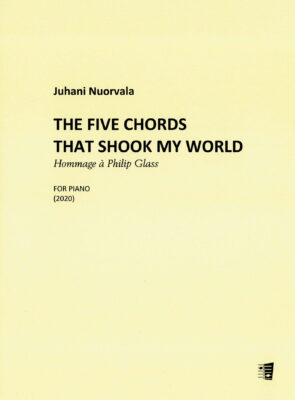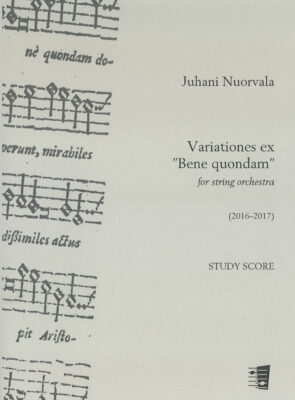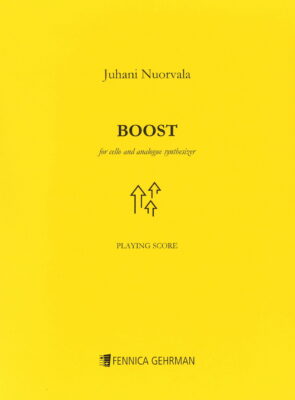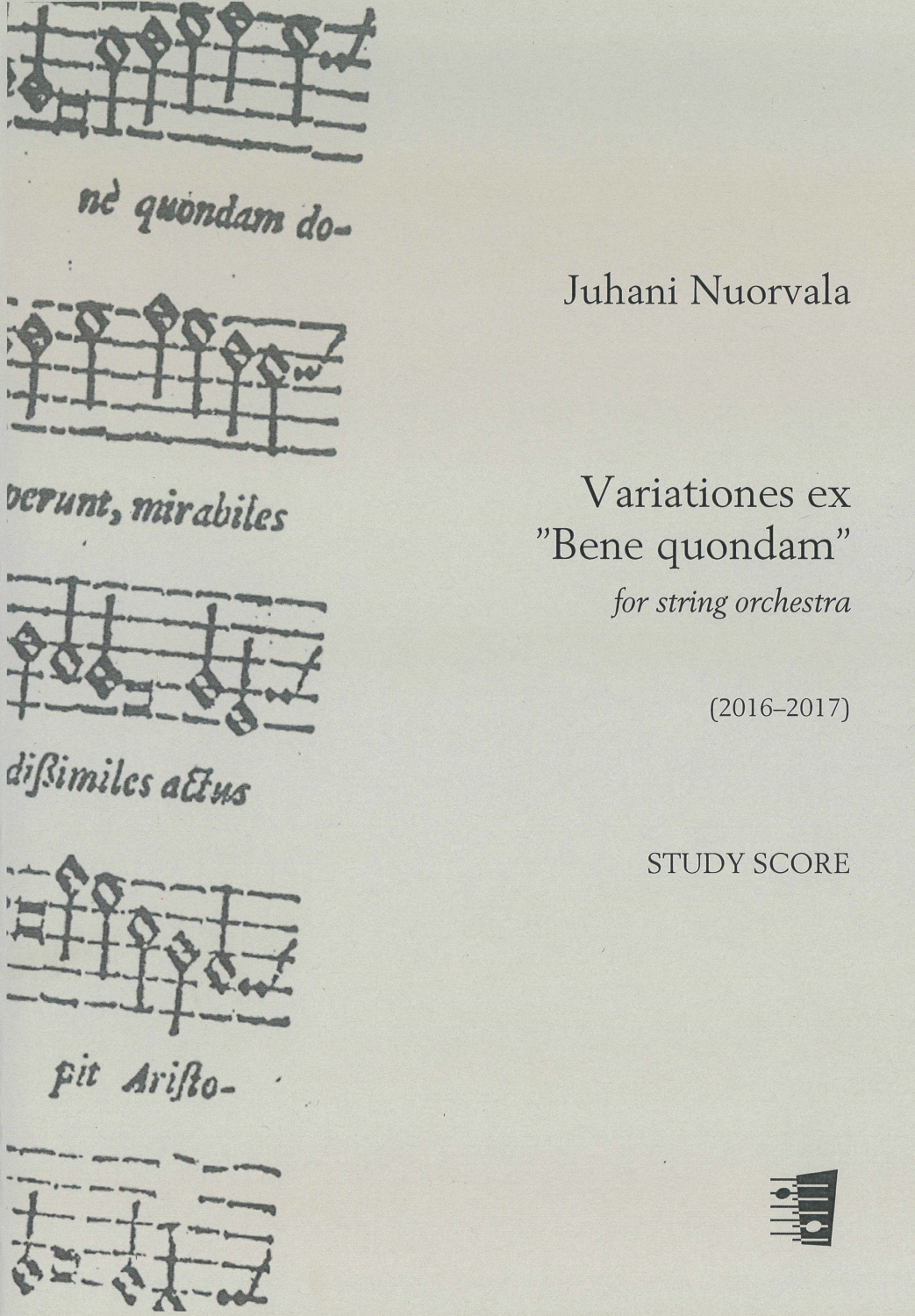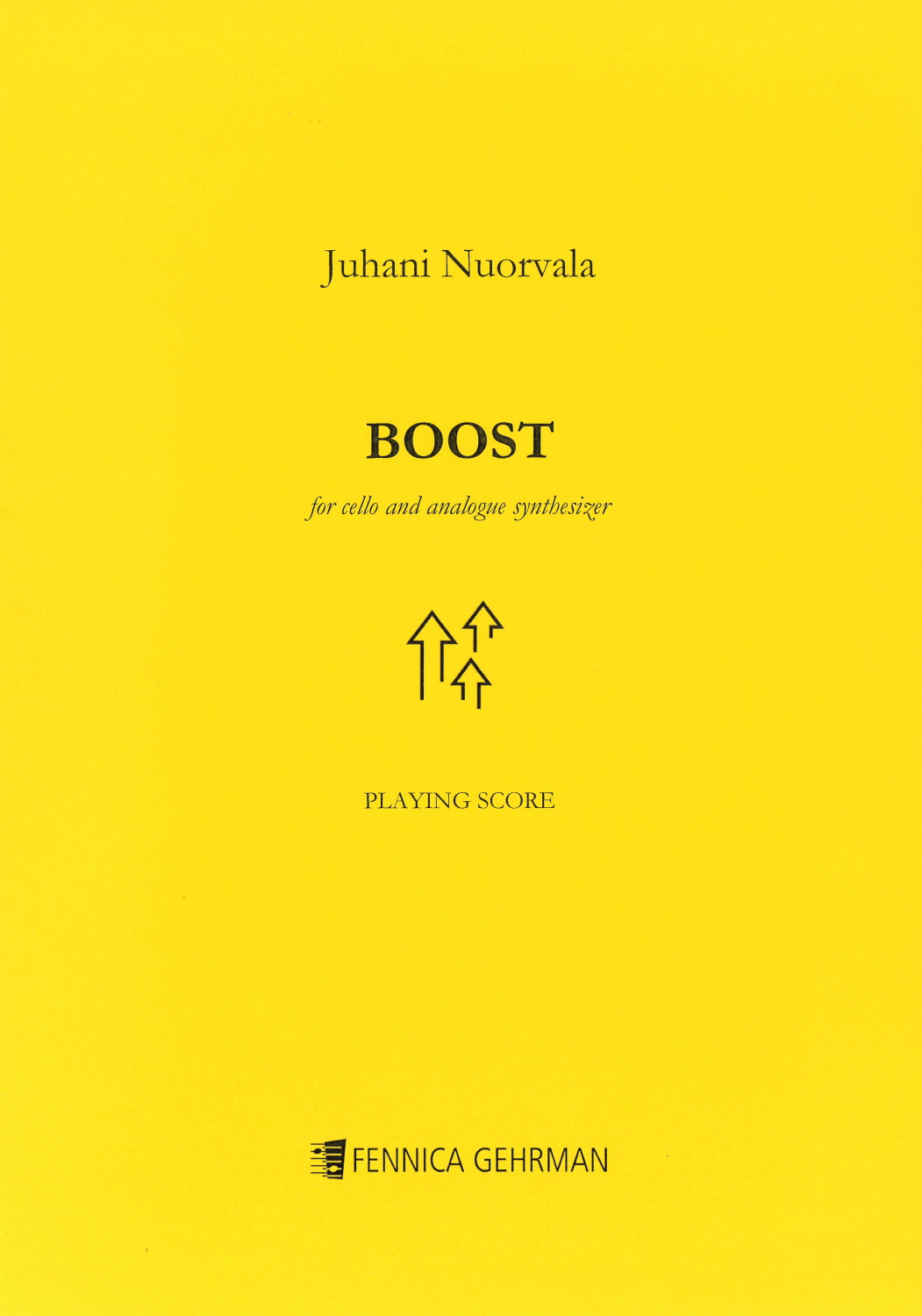
Nuorvala, Juhani
Juhani Nuorvala (born on 5 December 1961) studied composition at the Sibelius Academy under Eero Hämeeniemi. He also studied in Paris under Tristan Murail and in New York under David Del Tredici.
A notable variety of influences – microtonality, American minimalism, New Romanticism, popular music, techno – has been regarded as a special feature of Nuorvala’s idiom. Despite this he is not a collage artist; instead he has blended various ingredients to create a mode of expression entirely his own.
Nuorvala’s works are often marked with frenzied rhythmic drive. He makes music using elements and materials that both the mind and the body respond to. He finds these elements not only in old or new classical music but in various forms of urban popular music, such as the electronic music of modern dance clubs.
Nuorvala has composed chamber, orchestral and electronic works. The orchestral Pinta ja säe (Surface and Phrase) received a special commendation in the Vienna Modern Masters Competition in 1991. The Notturno urbano for chamber orchestra (1996) resounds with urban night life and is one of his most popular works. The Clarinet Concerto (1998) contains references to jazz, film music, Minimalism and techno. Septimalia (2014) was commissioned and premiered by the Finnish Radio Symphony Orchestra. Among his recent works is the string orchestra piece Variationes ex Bene Quondam which received enhuasiastic reviews after its premiere in September 2017 by the South Ostrobothnian Chamber Orchestra, conducted by Sakari Oramo. It received its US premiere by the Colorado University orchestra a month later.
Nuorvala has also created the music and sound for several plays at the Finnish National Theatre, in addition to writing an opera (Flash Flash, 2005) based on the life of Andy Warhol.
The strong rhythmic element is also present in the string quartet Dancescapes from 1992. The Second String Quartet (1997) includes some of Nuorvala’s most romantically soaring pages and has been adapted for string orchestra under the title Sinfonietta. His other chamber works include Prelude and Toccata for accordion as well as Boost for cello and synthesizer.
Juhani Nuorvala has for a long time been fascinated by the possibilities of microtonal writing. You can read more on his thoughts about the subject in this interview: https://untwelve.org/interviews/nuorvala
Clarinet Concerto
(1998)
2212-2000-02-electric bass-str
Duration: 23
Five Flashes from Flash Flash
(2005/2020)
for soprano and chamber ensemble
Percussion, Keyboard (synthesizer & harpsichord), Viola (amplified), Cello (amplified)
Duration: 18
Flash Flash
kaksi hologrammia ja väliaika (2005)
chamber opera
Libretto by Juha Siltanen Soloists (Soprano, Alto, Tenor, Baritone, Bass), Tap Dancer, 2 Keyboards (synthesizer & harpsichord), Percussion, Electric Guitar, Viola (amplified), Cello (amplified)
Duration: 120
Notturno urbano
(1996)
for orchestra
2(II=picc)22(II+cl.basso)2-2100-10-str Timpani + crotale & woodblock (one player)
Duration: 9
Septimalia
(2014)
for orchestra
3.3.3(III=clb).3(III=cfg)-433(III=btrb)1-12-hp-el.basso-str
Duration: 16
Sinfonietta (arr. of the String Quartet No. 2)
(1998)
for string orchestra
str
Duration: 19
Surface and Phrase / Pinta ja säe
(1990–91)
for orchestra
3331-4330-02-hp-pf-bass guitar-str
Duration: 14
Variationes ex "Bene quondam"
for string orchestra (2016-17)
str
Duration: 24
What's a Nice Chord Like You
Doing in a Piece Like This? (1996)
for five accordions (original version)
Duration: 10
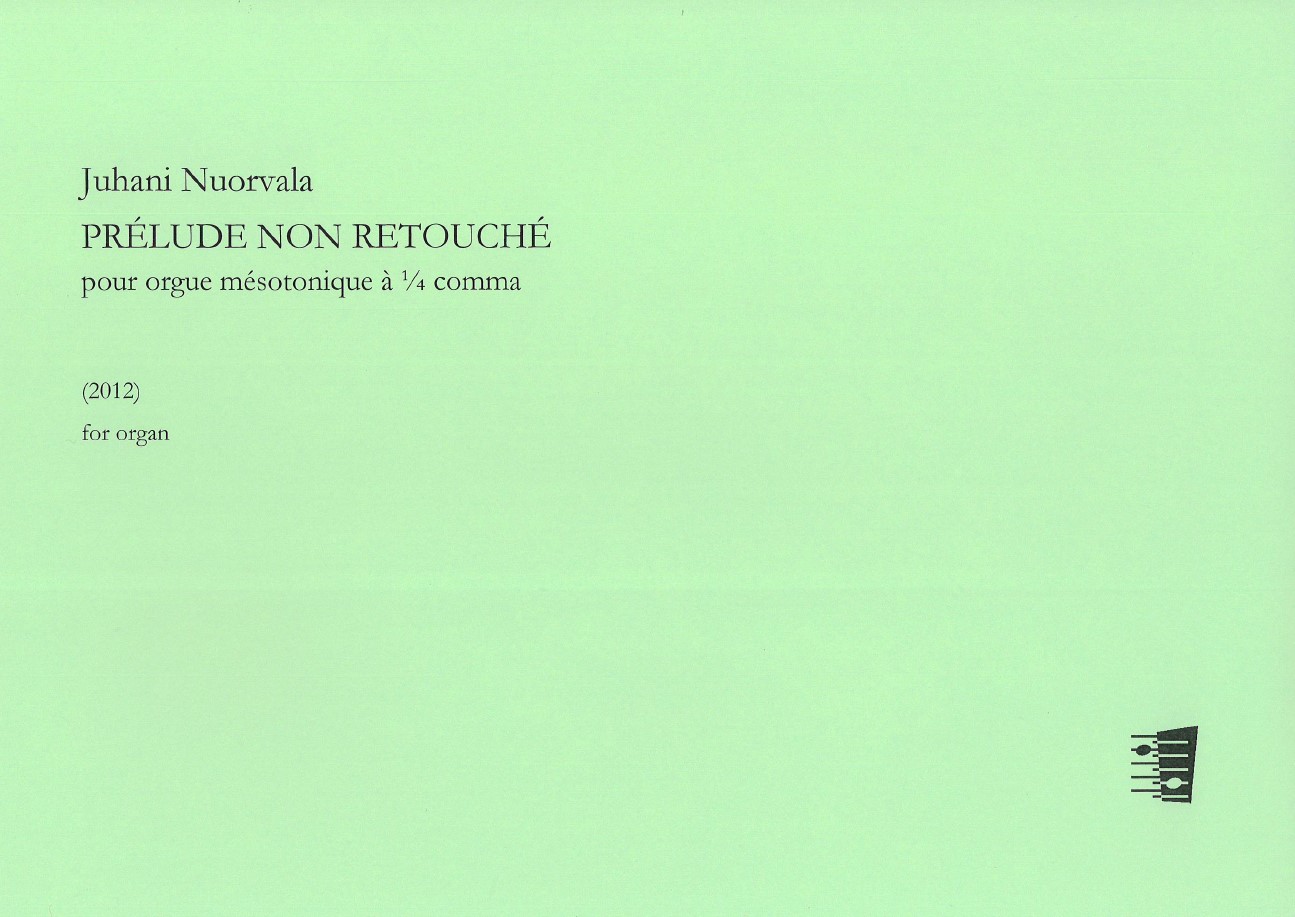
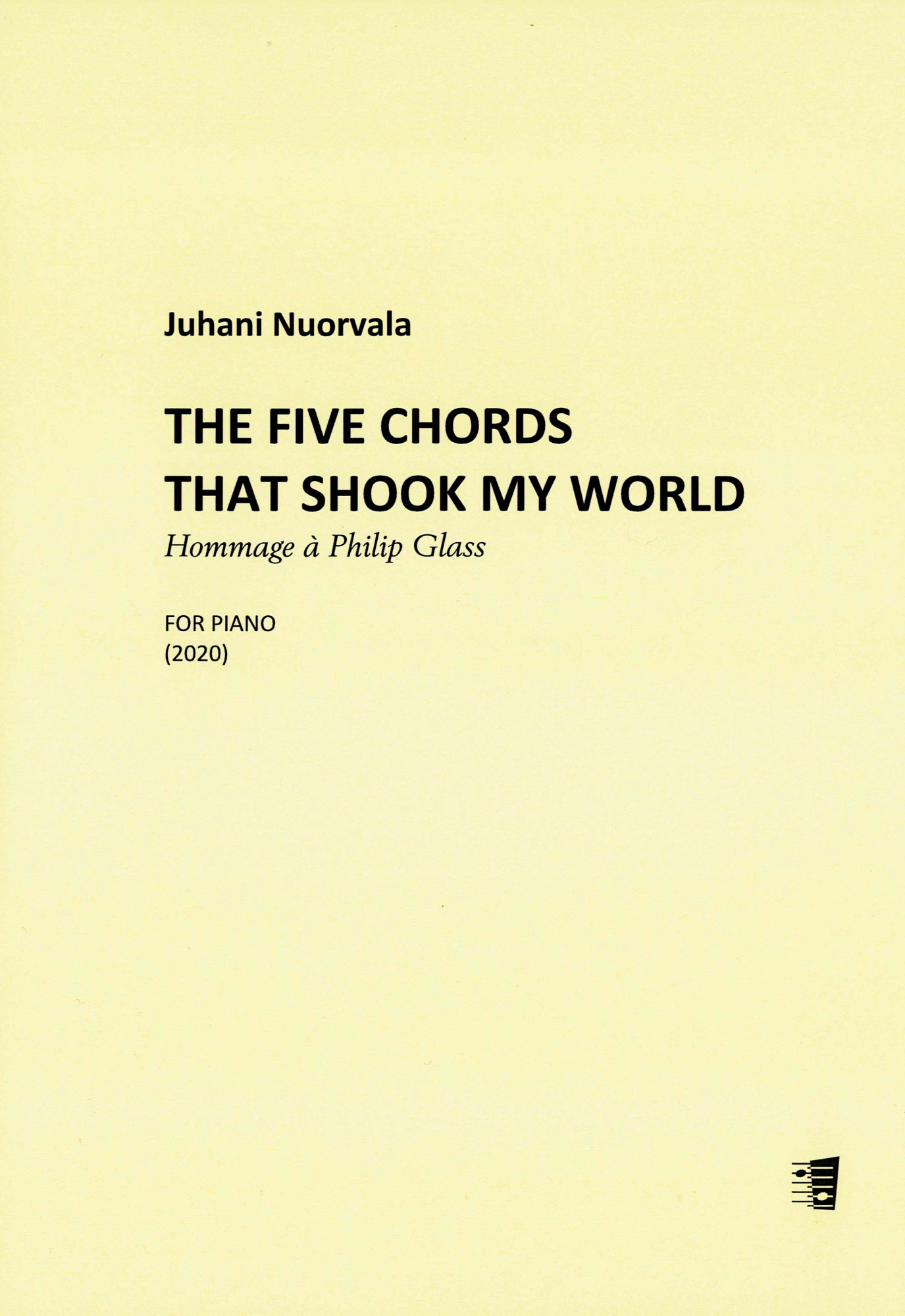
Notturno urbano
The Helsinki Philharmonic Orchestra, c. Dima Slobodeniouk (YouTube)
Clarinet Concerto
Harri Mäki, clarinet; Tapiola Sinfonietta, c. John Storgårds (SoundCloud)
String Quartet No. 2: Allegro
The Kerava Quartet (BIS CD-1107)
Boost
Markus Hohti, cello; Emil Homström, moog (Slim Phatty); Timo Kurkikangas, sound (YouTube)
Sonata for Violin and Keyboard
Pasi Eerikäinen, violin; Emil Holmström, keyboards (YouTube)
Prelude and Toccata for accordion
Tadas Motiecius


